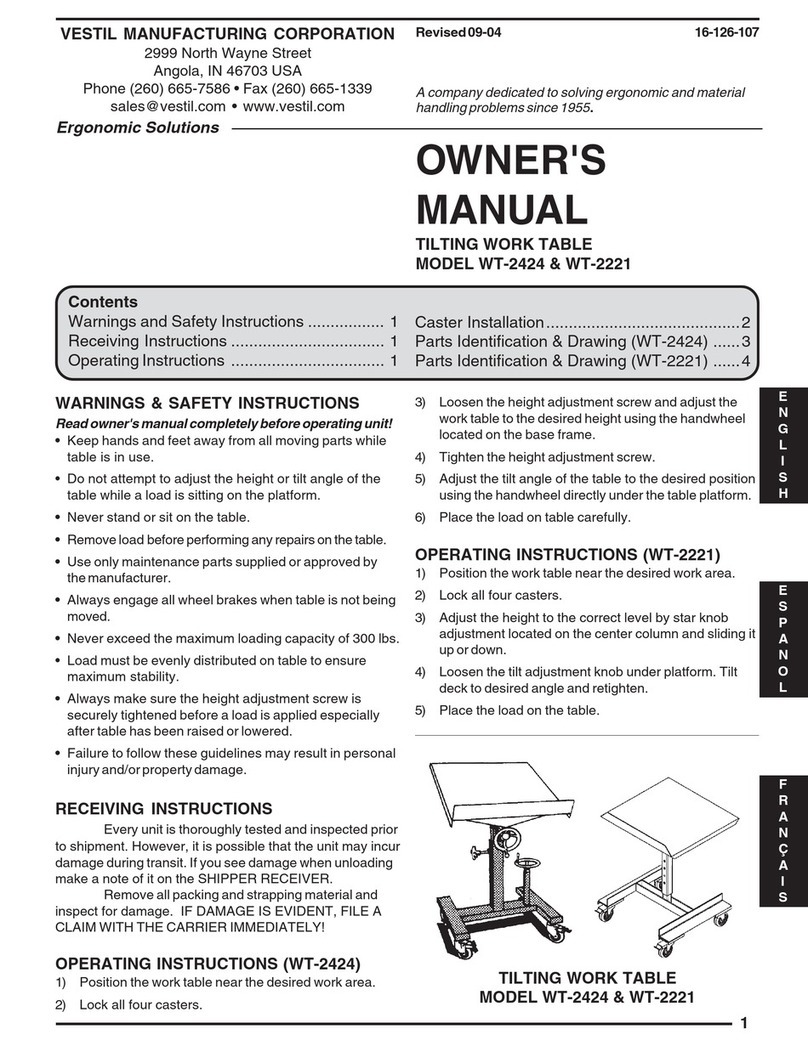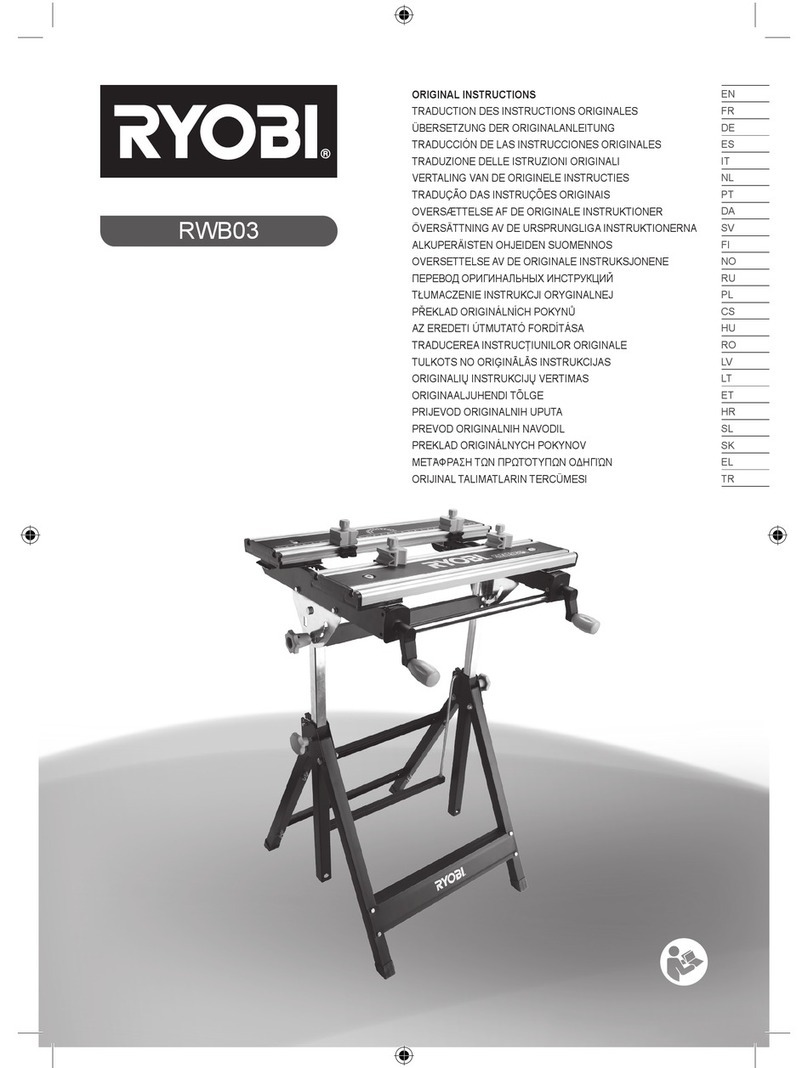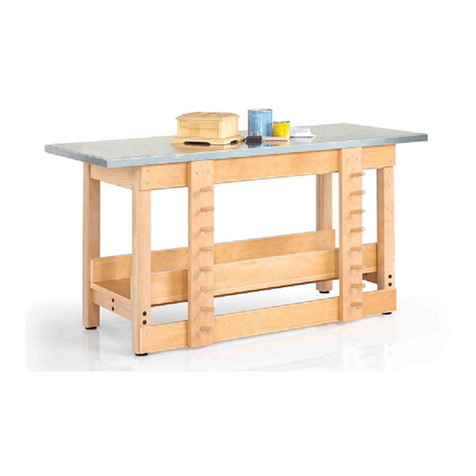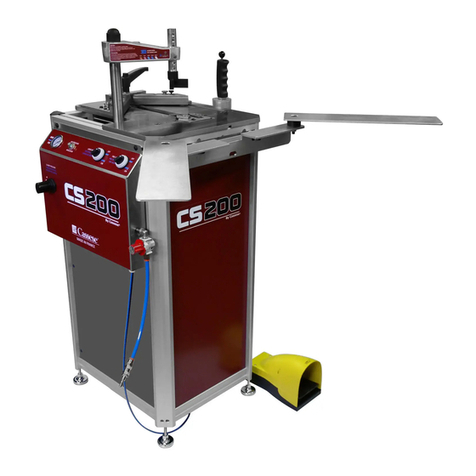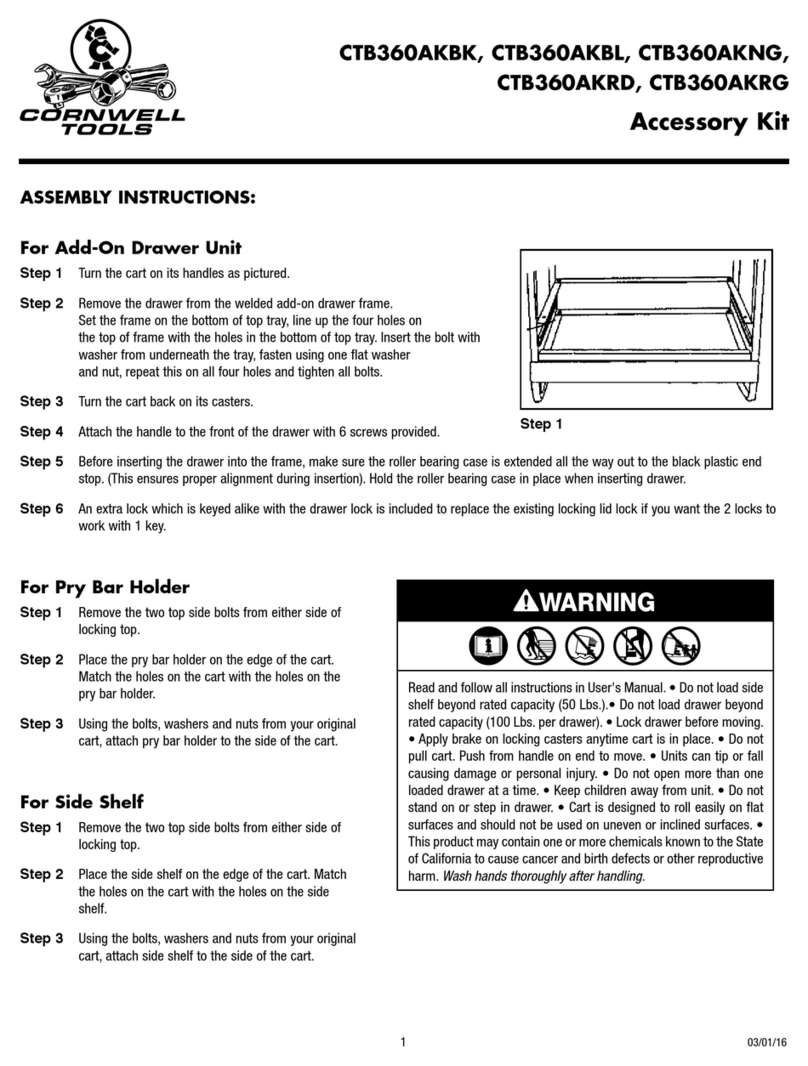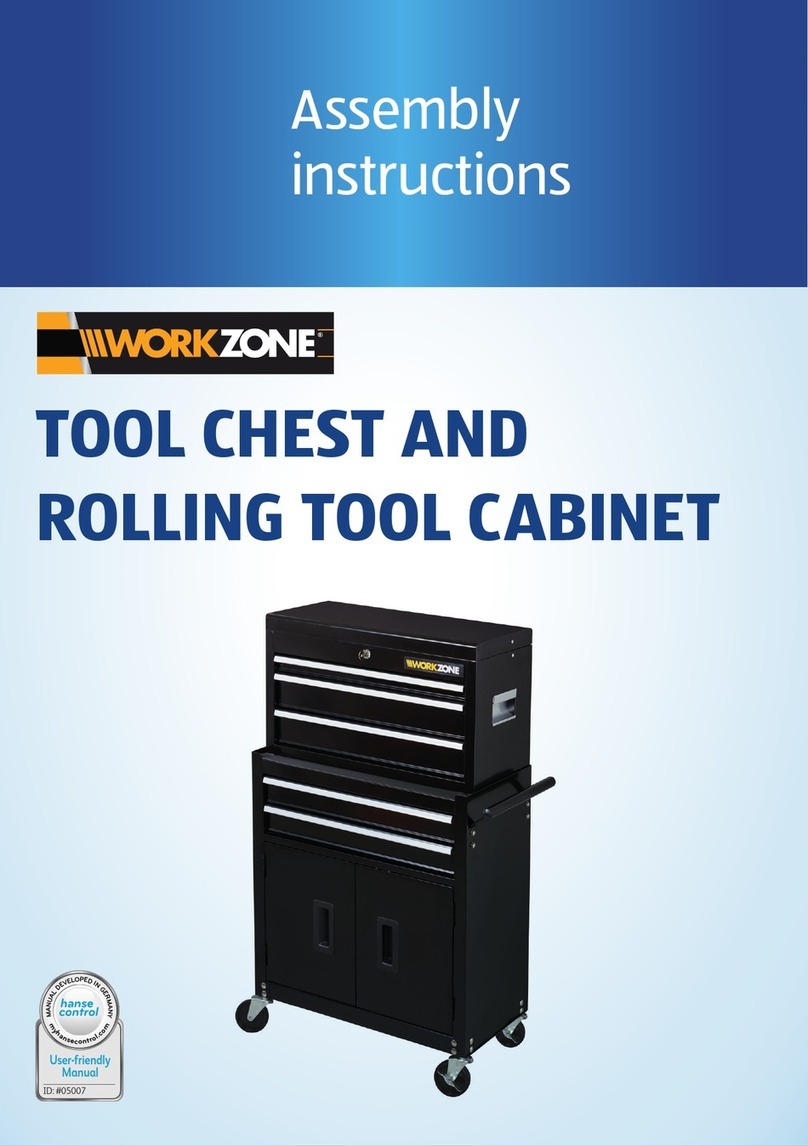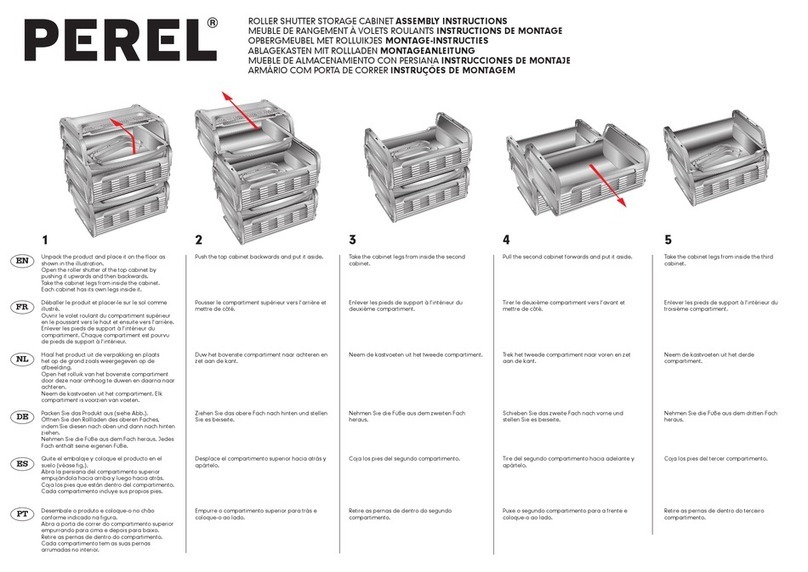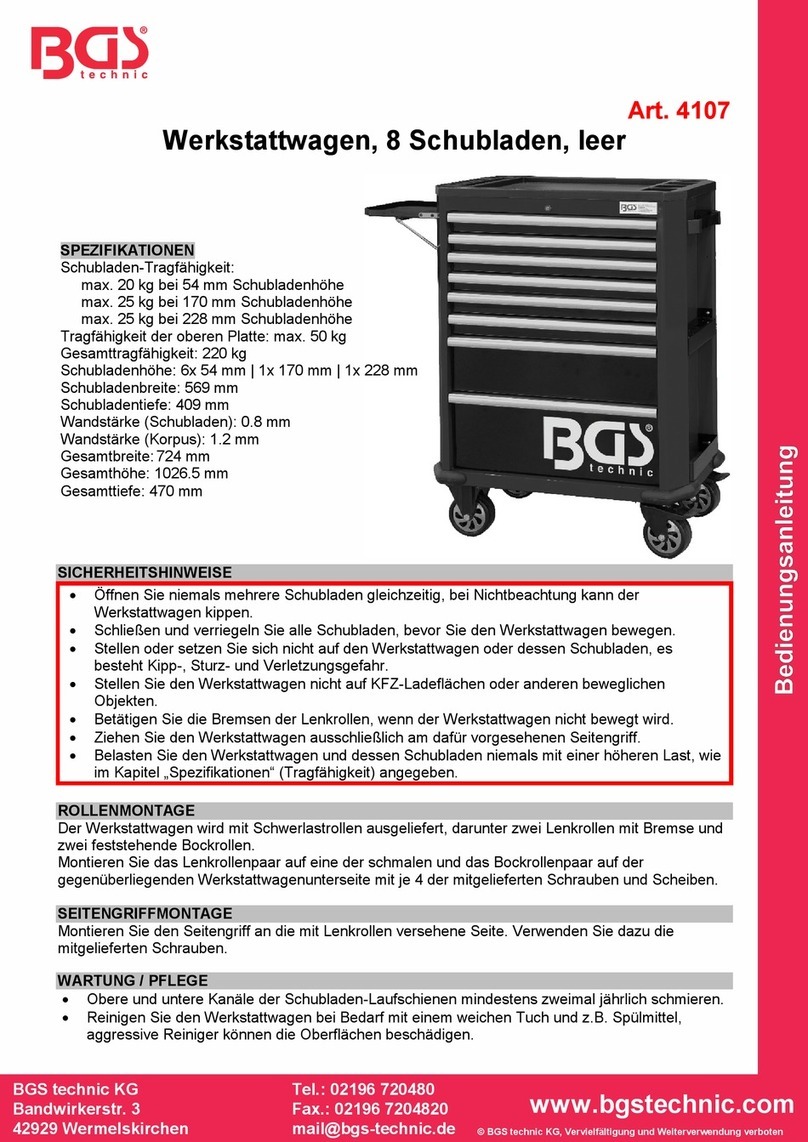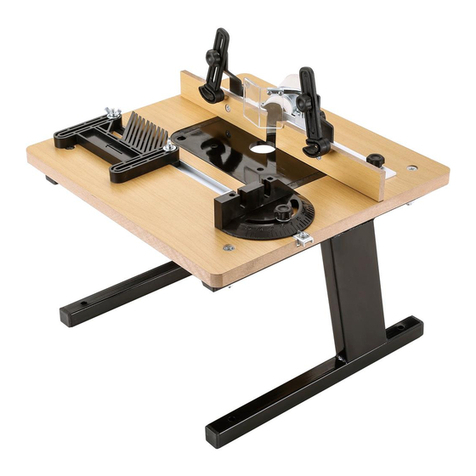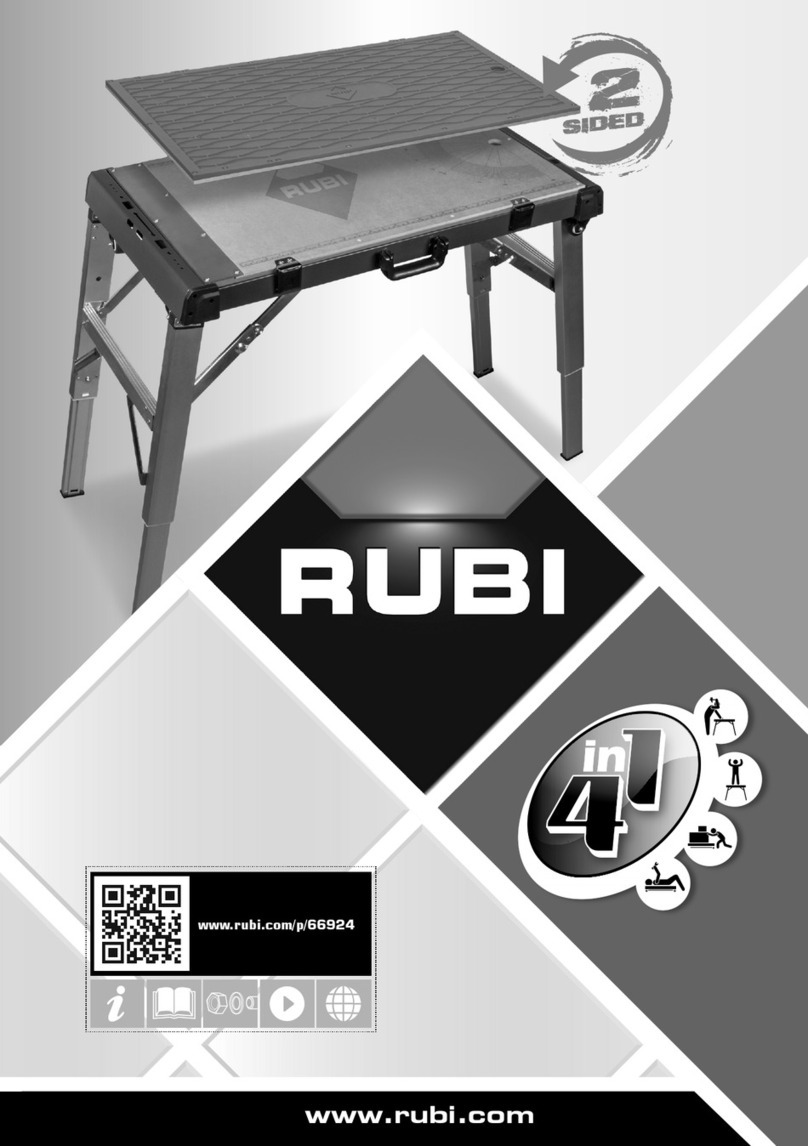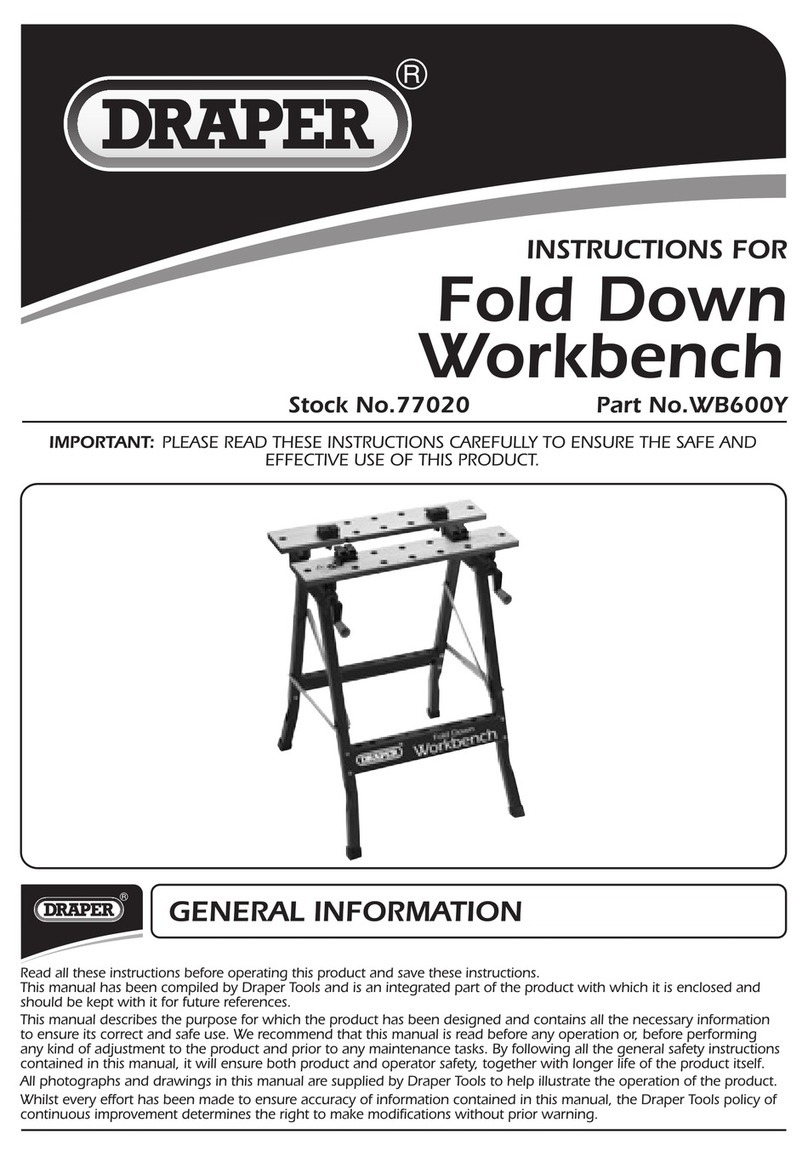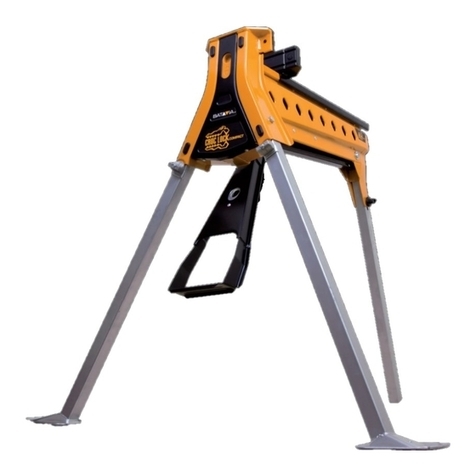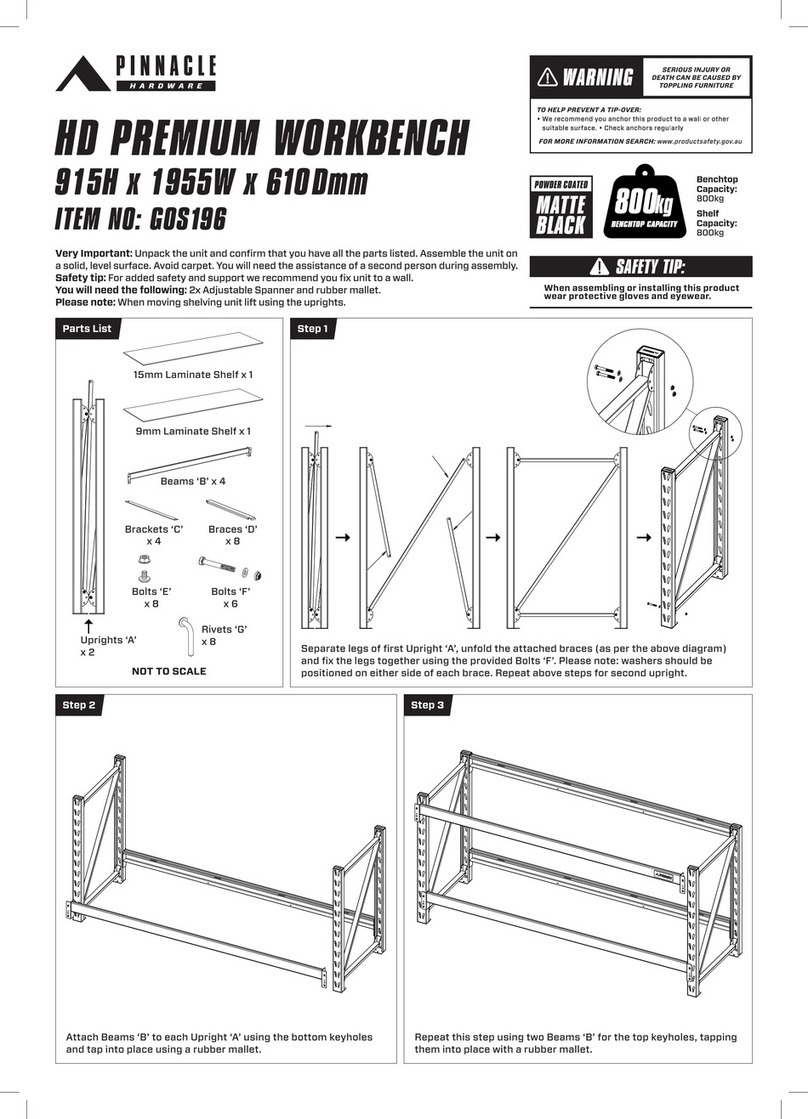4
25. Using the pre-drilled indicator holes as a guide,
drill ten 1/8" pilot holes through the Tray
Bottom (14) and into the Tray Front (11) and
Tray Back (12).
26. Fasten the pieces together with ten 11⁄2" Flathead
Wood Screws (23).
27. Glue and screw the Tray Ends (11) in place in
similar fashion to complete assembly.
28. Posistion the tray assembly in place, behind the
Workbench Top (1) and flush with the back
edges of the Sides (2), using a straight edge to
ensure the correct height placement.
See Fig. 5.
29. Once it is in place, drill 1/8" pilot holes and
screw the tray assembly to the Sides (2) with
two 11⁄2" Flathead Wood Screws (23) per side.
Final Assembly
30. Open and close the Workbench Top (1) and
Legs, making sure that the top is working
correctly. Adjust as needed.
31. Drill the remaining 1/8" pilot holes for the
Pivot Hinges (15, 16) and insert 1" Panhead
Screws (22).
32. Drill and insert the male ends of the bullet
catches into 3/8" diameter holes 3/8" deep,
centered on the top of the legs. Fig. 6.
33. Pull the legs out 90°.
34. Mark and drill 1/4" holes 1/2" deep in the
under side of the Workbench Top for the female
ends of the bullet catches. Fig. 6 Inset.
35. Sand and finish as needed. We recommend
Maloof’s Poly/Oil Finish
(Rockler product #58644)
Mounting to the Wall
This unit must be secured to a wall stud or other
structure in order to keep it from tipping and
possibly causing physical harm. Use the mounting
hardware and technique that is appropriate for your
location and application.
36. Locate the Folding Workbench where you are
going to use it.
37. Extend the legs.
38. Slide the Workbench up to wall and shim the
back of the cabinet as needed.
39. Secure to the wall with chosen hardware and
technique. Lag bolts or other heavy duty
fasteners (not included) are recommended.
See Fig. 7.
40. Attach the Pegboard (14) with the remaining
1" Panhead Screws (22).
Fig. 5
Fig. 6 - Bench tipped on side, showing alignment of
benchtop and catch.
Fig. 7 - Use lag bolts for wall mounting (not included)
Left Side
